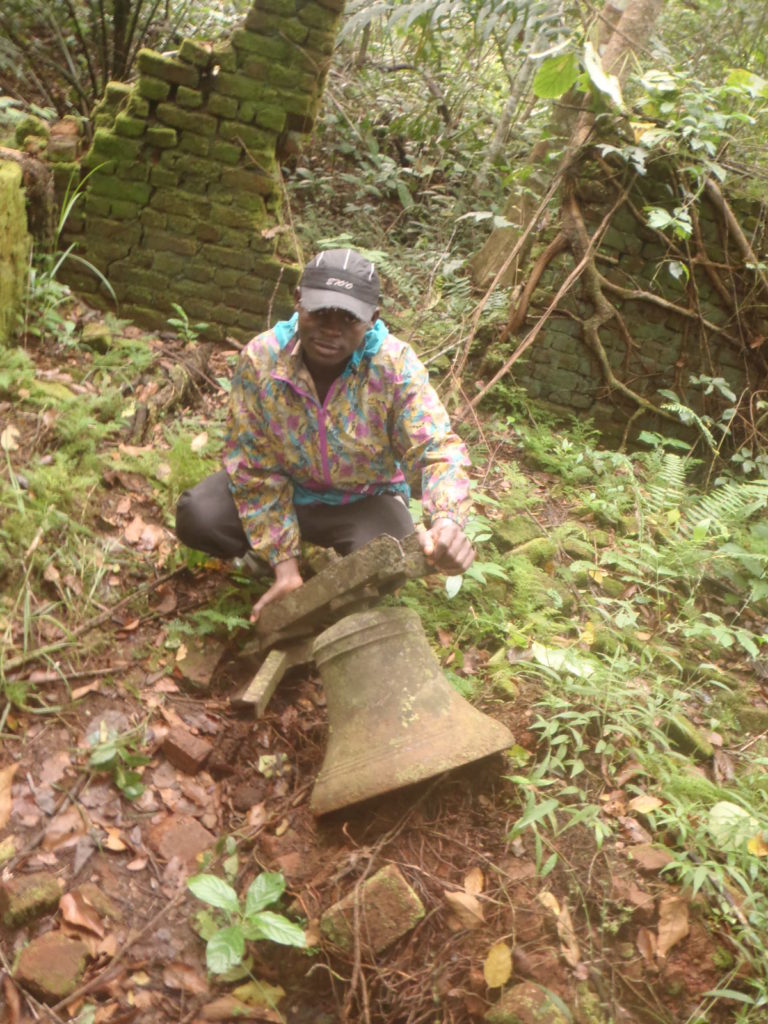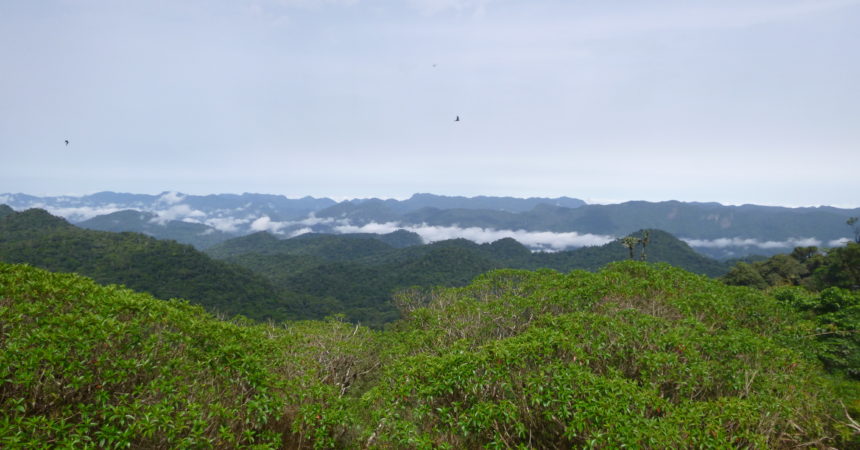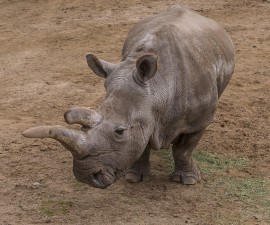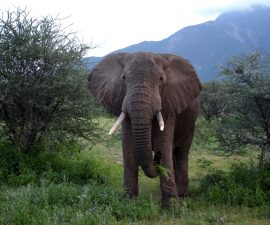San Diego Zoo Global’s Central Africa Program has been working in the Ebo forest in Cameroon since 2002. The Ebo forest (pictured above) is one of the last remaining havens for a range of species that do not live in many other places in Africa—the landscape called the Gulf of Guinea Biodiversity Hotspot. This area is to the north of the Congo Basin rain forest, and while some species are common to both areas (such as forest elephants) others species are subtly different between the two zones. One great example of closely related but distinct species is the drill and mandrill—the drill lives in the Gulf of Guinea Hotspot (including the Ebo forest, as we outlined in an earlier blog) while the mandrill lives only in the Congo Basin rain forests.
Recently, the Central Africa Program received some potentially worrying news. We heard that it has been suggested that the Ebo forest might be turned into two long-term logging concessions, as opposed to a national park, which had been the plan for many years, and which had been publicly endorsed by government ministers.
We are still coming to terms with this suggestion, particularly given the lack of official information, as every government’s priority now is to deal with the current global COVID-19 outbreak. But we have been heartened by efforts in Cameroon and internationally to spread messages of support for alternative forms of land use which would be more sustainable methods of preserving the forest and wildlife, and generating income for the local communities and country rather than simply logging the forest.
Perhaps the strongest reason for wishing to protect the Ebo forest from logging is its globally significant populations of threatened wildlife and plant species, many of which are new to science. Ebo has been classified as a vitally important site for gorillas, the most endangered form of chimpanzees with a unique tool use repertoire, drills, and it is home to one of only two remaining populations of Preuss’s red colobus. In terms of its botany, the National Herbarium of Cameroon, itself a government institution, as well as the Royal Botanic Gardens at Kew, UK, have recorded no less than 15 new plant species to science, including several large trees!
In addition, the forest is an important resource for more than 40 communities living at its edge. Fascinatingly, much of the ‘forest’ was actually peppered by many villages until the independence of Cameroon in 1960. At that time, government policy was to relocate these villages to the boundary of the current forest.

Today’s villages, however, maintain their ancient chieftaincy structures—it is not uncommon to enter what seems like a single village and be told that there are actually four villages represented, each of which has its own chief (or traditional ruler). Everyone is fully cognizant for their heritage, not just within these chieftaincies but actually the exact location of their ancient village in the forest. For many, their parents and close relatives are buried in these ancient villages in the forest, which are now regarded as sacred sites.
Successive ministers in charge of the Cameroon’s Ministry of Forestry and Wildlife have confirmed and disseminated the importance of the Ebo forest, and the resolve of the Government of Cameroon to conserve it for posterity, including a contribution to the foreword in the IUCN-endorsed Conservation Action Plan for the Nigeria-Cameroon chimpanzee. Thus, we know that the government understands and recognizes the importance of the forest for wildlife.
Our suggestion is that should the Government of Cameroon uphold the classification of the forest into Forest Management Units, these units should be set aside for the conservation of the rich biodiversity of the forest, with active involvement and participation of local communities adjacent to the forest. This has already been initiated in other areas of Cameroon. In terms of financing, sustainable sources are currently available, and novel sources are likely to be generated as the world looks to the future of protecting these unique environments. For example, the Ebo forest contains an estimated 35 million tons of carbon; these stocks are capable of generating sustainable funds for the local communities and Cameroon as a whole. In addition, Ebo happens to be perfectly located to be developed into a cultural and biological ecotourism destination in central Africa.
Let us hope that the value of the forest in terms of its biological riches and its cultural significance will result in its long-term protection from destructive practices, and that these assets will be passed down to future generations intact, as they have been to us.
The Central Africa Program is a San Diego Zoo Global field research effort established in 2005. Read the previous blog, Drills in the Ebo Forest, Cameroon.





